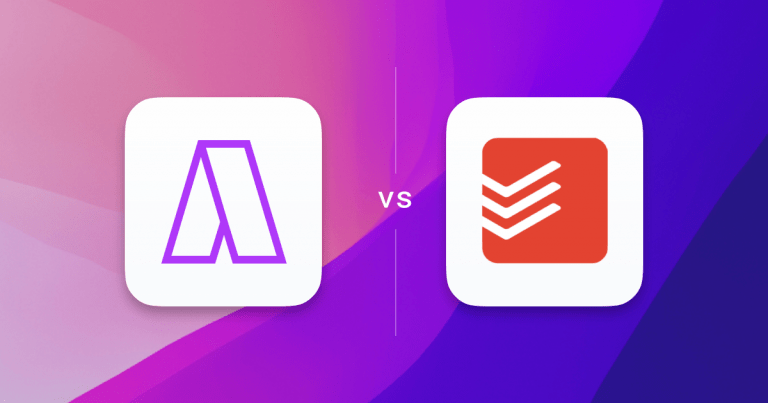What is Trello
It’s known for its easy-to-use Kanban board approach but also offers other views like timelines and calendars. Trello is great for visual organization and team collaboration, with features like customizable cards, labels, and notifications. However, it may be less feature-rich compared to some alternatives like ClickUp or Monday.com, particularly in areas like advanced reporting or analytics. Trello’s simplicity makes it accessible but might not suffice for complex project management needs.

Key Features of Trello
- Board Organization: Trello’s boards enable visual management of projects using lists and cards, enhancing visibility and tracking.
- Customizable Cards: Cards can be enhanced with descriptions, checklists, labels, and attachments, providing essential task details in one place.
- Team Collaboration: The platform supports real-time team collaboration, ensuring everyone is updated and in sync.
- Drag-and-Drop Interface: Its intuitive interface allows easy movement of cards between lists for updating priorities and workflow.
- Labels and Filters: These help in categorizing and organizing tasks, with customizable label colors and names.
- Notifications and Reminders: They keep users informed about due dates and important updates, ensuring task deadlines are met.
What is Routine
Routine is a productivity tool that sets itself apart with its all-in-one approach, combining elements of task management, note-taking, and calendar integration into a single platform. Designed to cater to the needs of busy professionals and individuals seeking to streamline their organizational process, Routine offers a comprehensive solution for managing daily tasks, appointments, and notes. Its unique selling point is the integration of these features within an intuitive and user-friendly interface, making it easier for users to track their to-dos, schedule their days, and store important information in one place. This level of integration is particularly useful for those who prefer a unified system to manage various aspects of their work and personal life.

Key Features of Routine
- Timeline Agenda: Offers a detailed view of the day’s plan with timestamps, including meeting and event reminders, with options to time-block tasks.
- Week Calendar: Provides a 5-day, week, and month view for task planning, integrating seamlessly with Google Calendar.
- Console Capture: A desktop feature for capturing events, notes, and tasks outside the application, ideal for GTD enthusiasts.
- Centralized Workspace: Combines tasks, notes, and calendar in one space.
- Organization: Utilizes categories and tags for better event and task management.
- Daily Plan: Helps in crafting focused daily tasks and important events.
Trello vs Routine: Features
| Features | Trello | Routine |
|---|---|---|
| Integrations | Trello integrates with several apps including Google Drive, Google Chat, Google Hangouts, Google Slides, Jira, Slack, GitHub, Dropbox, and Zendesk | Syncs with multiple calendar services and task managers like Todoist and Google Tasks. |
| Calendar | Yes. Trello offers a Calendar view which is available for Premium and Enterprise plans. | Google Calendar, Notion, Slack, Zapier, Siri, Gmail |
| Platforms | macOS, iOS, Android, Web, and Windows | macOS, Windows, iOS, Android, Web |
| Task Management | Trello provides features like advanced checklists, labels for prioritization, and the ability to manage recurring tasks | No |
| Natural Language Processing | No | Offers task creation with date assignment via drag-and-drop |
| Time Blocking | While Trello itself does not have a native time blocking feature, it can be used in conjunction with time blocking techniques | Available |
| Analytics | Trello offers basic task analytics, particularly when integrated with tools like Zapier and Google Sheets for data analysis. | No |
| Meeting Scheduler | No | No |
| Time Zones | Yes | Yes |
| Reminders | Yes | Yes |
| Customer Support | Good | Average |
| 1:1 User Onboarding | Not mentioned on their website | No |
| Pricing | Free Plan for individuals and small teams, Standard Plan at $5 per user/month (billed annually), Premium Plan at $10 per user/month (billed annually), and an Enterprise Plan for larger organizations at $17.50 per user/month (billed annually) | $12 per month, annually |
Trello vs Routine: Pricing
Trello Pricing
Trello offers several pricing plans:
(i) Free Plan: $0, suitable for individuals or small teams to organize projects.
(ii) Standard Plan: $5 per user/month (billed annually) or $6 monthly, for small teams needing work management and collaboration scaling.
(iii) Premium Plan: $10 per user/month (billed annually) or $12.50 monthly, for teams tracking multiple projects with various visualization tools.
(iv) Enterprise Plan: $17.50 per user/month (billed annually), providing connectivity, security, and controls for organizations.
Routine Pricing
(i) Free Version: Available for students and hobbyists, though with limited features.
(ii) Professional Plan: Priced at $12 per month.
(iii) Business Plan: Costs $15 per user per month.
(iv) Believer Plan: Priced at $10 monthly or $8 per month for an annual commitment, totaling around $96 annually
Trello vs Routine: Reviews
Trello Review
Trello is highly regarded for its visual project management capabilities, particularly its use of the Kanban system. It’s appreciated for its ease of setup and the variety of views it offers, making it a favorite among both specialist and generalist users. Trello’s array of features, including multiple views, detailed card information, and numerous integrations, contribute to its effectiveness.
However, it’s noted that Trello has been slow in developing certain features. This aspect might affect users looking for a more feature-rich experience. Trello is considered suitable for small to medium-sized teams, as well as large teams, and it provides a great individual user experience too. Its simplicity and lower learning curve compared to tools like Notion make it easy to learn and implement.
Routine Review
Routine stands out for its exceptional design, skillfully combining elements of daily planning, note-taking, and journaling into a user-friendly interface. The application’s free version is especially popular among students and individuals using it for personal or hobbyist projects, making it a preferred choice in these communities. Additionally, Routine’s smart planning and scheduling capabilities are highly valued by users who favor an automated, intelligent approach to organizing their tasks and appointments. However, a significant limitation of Routine, particularly in its free version, is the constrained number of integrations it offers. This restriction is frequently mentioned by users as a downside, as it may limit the app’s effectiveness in more integrated digital workflows.
Which One Should You Pick
Consider Trello if
- You need a user-friendly project management tool: Trello is great for those who prefer a simple, visual approach to task and project management with its easy-to-use Kanban boards.
- Your team requires basic project management features: Trello is suitable for teams that need straightforward project management capabilities without the complexity of more advanced tools.
- You rely on integrations but don’t need extensive features: Trello offers a range of integrations through its Power-Ups, but it may not be as comprehensive as some other tools for users requiring advanced features.
Consider Routine if
- You Want a Balance Between Calendar and Task Management: Routine offers a mix of these features, but it might not be as comprehensive as some specialized apps in either category.
- You Like Quick Task and Note Capturing: The app has convenient features for this, though it’s not a full-fledged note-taking application
- You’re Looking for a Personal Planner: Routine is more suited to personal use and less technical users, but it might not meet all the needs of power users or large teams.
Best Trello and Routine Alternatives
- Akiflow: Akiflow is a time management app offering time blocking, task scheduling, and integrations with various tools. It focuses on productivity and organization through a unified task and appointment interface.
Akiflow Price: $19 per month, paid annually - Asana: Asana is a project management tool focused on team collaboration and work organization, offering multiple views for task management, app integrations, and AI features for efficiency. It’s suitable for various team sizes, streamlining workflows and aligning goals.
Asana Price: Asana offers three plans: the free Personal plan for basic needs, the Starter plan at $11.59 for expanded features like timeline view, and the Advanced plan at $25.69 for comprehensive project management tools including time tracking and advanced customization. - Motion: Motion uses AI to automatically plan your day, considering tasks, meetings, and personal time. Motion offers features like smart rescheduling and priority-based task management, aimed at enhancing efficiency and reducing stress.
Motion Price: $19 per month, annually

Best Time Blocking Web and Desktop Apps, 2024
Explore the best time blocking apps of 2024! Discover how Akiflow, TickTick, Usemotion, Sunsama, Sortedapp, and TimeHero revolutionize productivity, offering unique features for professionals and students to manage tasks and enhance efficiency.

Improve Focus: 5 ADHD Productivity Tools & Calendar Apps for 2023
Discover five of the best apps and tools for those with ADHD, from note-taking apps to time-blocking platforms. Get ready to stay organised, motivated and on track with Akiflow’s essential guide.

The Top 3 Todoist Alternatives (In-Depth Review)
Over 25 million people now use Todoist to stay on track and plan their day. It has expanded rapidly and is now a widely used task manager with seamless integrations into other task and calendar managers like Akiflow. While Todoist is hugely popular among its wide user base, there are now a variety of Todoist […]

